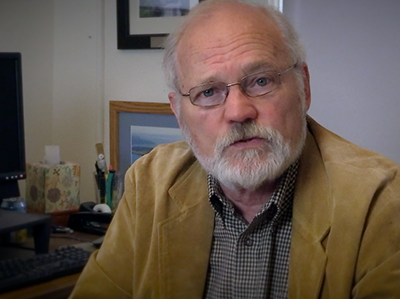On June 27, Environmental Protection Agency Administrator Scott Pruitt signed a proposed rule rescinding the Obama administration’s “Clean Water Rule.” This regulation is designed to clarify which streams, lakes, wetlands and other water bodies fall under the protection of the Clean Water Act.
EPA developed the Clean Water Rule in an attempt to resolve uncertainty created by a fractured 2006 Supreme Court decision, Rapanos v. United States. The Rapanos ruling caused widespread confusion about which waters were covered, creating uncertainty for farmers, developers and conservation groups. Efforts to clarify it through informal guidance or congressional action had failed, and EPA acted under mounting pressure from various quarters, including some members of the court.
As Oklahoma’s attorney general, Pruitt unsuccessfully sued to kill the rule, which he has called “the greatest blow to private property rights the modern era has seen.” Now he is seeking to accomplish by administrative fiat what he failed to achieve in court. However, he faces a stiff challenge from supporters of the rule, and the courts may not buy his arguments for wiping a rule off the books.
Making the case for change
Under the Administrative Procedure Act, federal agencies must follow specific steps when they seek to establish or repeal a regulation. These procedures are meant to establish efficiency, consistency and accountability. To promote fairness and transparency, the law requires that the public must have meaningful opportunity to comment on proposed rules before they take effect.
The Clean Water Rule emerged from an extensive rule-making process that featured over 400 meetings with state, tribal and local officials and numerous stakeholders representing business, environmental and public health organizations. It generated over one million comments, the bulk of which supported the rule.
This process was preceded by a comprehensive peer-reviewed scientific assessment that synthesized over a thousand studies documenting the importance of small streams and wetlands to the health of large rivers, lakes and estuaries. According to a 2015 fact sheet, which has been scrubbed from EPA’s website but is archived here, the rule protects streams that roughly one in three Americans depend upon for their drinking water.
To undo the Clean Water Rule, EPA will have to go through the same notice-and-comment process. Pruitt’s proposal to rescind the rule will be published in the Federal Register sometime in the near future. From that date, the public will have just 30 days to file written comments electronically. (Normally public comment periods last for 60 days, and the Clean Water Rule was open for comment for 120 days.)

USEPA/Flickr
EPA must then review and respond to the comments, make any changes it deems necessary and publish a final rule. Parties with standing can then challenge the final rule, although there is a question as to which court will have jurisdiction to hear them. The Supreme Court is scheduled to hear arguments on this issue in the fall. In weighing challenges, the key question the court must address is whether EPA’s action is “arbitrary and capricious,” meaning that the agency has failed to consider important aspects of the problem or explain its reasoning.
In a seminal 1983 decision, the Supreme Court ruled that an agency must supply a “reasoned analysis” when it rescinds a rule adopted by a previous administration. The court acknowledged that agencies have some discretion to change direction in response to changing circumstances. However, it noted that “the forces of change do not always or necessarily point in the direction of deregulation.” Further, the court said that a decision to rescind a rule would be arbitrary and capricious if it offers an explanation “that runs counter to the evidence before the agency.”
Pruitt asserts that his repeal “need not be based upon a change of facts or circumstances,” citing a 2009 opinion by Justice Antonin Scalia. But in my view, Pruitt reads too much into that decision, which simply held that an agency did not face “heightened scrutiny” – that is, an extra-high bar – when changing policy, but must still “show that there are good reasons for the new policy.” As Justice Breyer observed, dissenting in the same case, “Where does, and why would, the Administrative Procedure Act grant agencies the freedom to change major policies on the basis of nothing more than political considerations or even personal whim?”
Does Pruitt have good reasons? Let’s consider them.
Repair or replace?
In his draft proposal, Pruitt argues for repealing the Clean Water Rule because it fails to pay enough homage to federalism principles embodied in section 101(b) of the Clean Water Act, in which Congress expresses a policy to “recognize, preserve and protect the primary responsibilities and rights of States to prevent, reduce and eliminate pollution.” Yet at another point he states that “This action does not have federalism implications” and, further, that it will not affect “the relationship between the national government and the States.”
Which is it? Either the repeal is necessary to rebalance power relationships or it isn’t. Moreover, wouldn’t it make more sense to first identify how the current rule encroaches on states’ authority and propose specific changes for public comment? Why throw the baby out with the bathwater?
Pruitt also contends that if states want to protect waters more strictly than the federal standard, they can choose to do so. But according to a detailed 50-state survey by the Environmental Law Institute, 36 states “have laws that could restrict the authority of state agencies or localities to regulate waters left unprotected by the federal Clean Water Act.”
According to a report by the Association of State Wetland Managers, only 23 states have laws that directly regulate activities that impact wetlands. The rest depend upon authority provided by section 401 of the Clean Water Act to provide protection for important wetlands. As the act shrinks, so do those authorities.

Gage Skidmore/Flickr, CC BY-SA
After rescinding the Clean Water Rule, Pruitt proposes to carry out a new and potentially lengthy rule-making process in which EPA and other agencies will reevaluate which waters are protected under the Clean Water Act. President Trump has directed Pruitt to consider a revised rule modeled on a highly restrictive definition that Justice Scalia proposed in the Rapanos case. As I have explained elsewhere, the Scalia test is not the controlling standard that the courts have adopted following Rapanos, and it would drastically reduce the coverage of the act from its historic reach.
Pruitt says it is necessary to repeal the Clean Water Rule while EPA reviews which waters should be covered by the Clean Water Act. Otherwise, he contends, the Supreme Court may lift a stay imposed on the rule by a federal appeals court, opening a floodgate of litigation across the country. But that is exactly what his proposed repeal would do. The court would likely grant EPA’s request to extend the stay for a reasonable period of time to allow EPA to initiate a full rule-making on a proposed revision of the rule.
Verdict: Arbitrary and capricious
Scott Pruitt has been on a slash-and-burn crusade through his predecessors’ regulatory initiatives. But the courts are beginning to scrutinize these moves more closely. Notably, the D.C. Circuit just ruled that Pruitt cannot suspend an Obama-era rule to restrict methane emissions from new oil and gas wells.
Elections do matter. But so does the rule of law. Pruitt has not offered any compelling reason to justify killing the Clean Water Rule outright. There is plenty of time for a more “reasoned analysis” of ways to protect the nation’s water quality.
This article was originally published on The Conversation. Read the original article.



